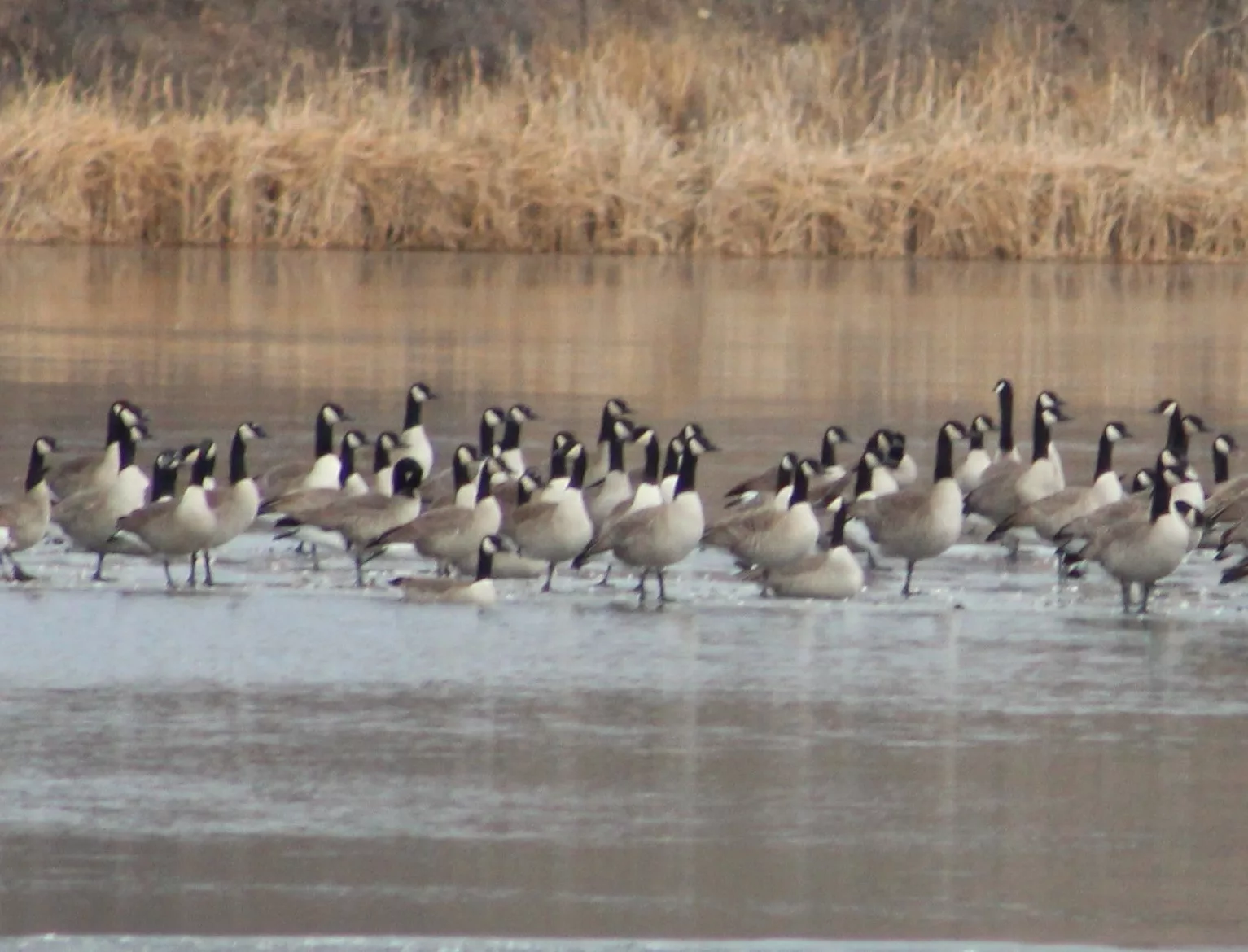
By Nick Simonson
With the end of firearms deer season, and the seemingly perfect timing of winter’s onset including a number of nights with lows less than zero degrees and days staying well below freezing, sportsmen are making the mental shift toward ice fishing at a rapid rate. In the hurried efforts to get flipover shacks and pop-up tents ready, batteries charged, and augers tuned to cut those first holes of the hardwater season, anglers would be wise to take stock of where their local lakes sit before heading out and keep in mind some helpful tips and reminders about ice thickness, formation and safety as first ice settles in.
There are quite a few established guidelines for what various thicknesses of good clear ice can support. In general, if the ice is less than four inches, anglers should stay off, even if it formed well in a cold and calm stretch of weather without precipitation. After that point, anglers can begin exploring the newly frozen surface of a lake in single file and spread out. At thicknesses of six inches, good clear ice can typically support a snowmobile or a light ATV. At 12 inches, a small car or truck can generally drive on good clear ice. Most agencies recommend at least 16 inches of ice before driving a full-size pickup on
the ice. Again, these are guidelines for solid, clear ice which formed under ideal conditions, which rarely happens lake-wide or from water to water.
With the whipping winds of late fall and early winter (as we’ve experienced this past week) and unpredictable weather which brings rain, sleet and snow when things warm up, the biggest factor which weakens ice is the weather conditions preceding a freeze and right after it. Add to that an environment in flux as the seasons change – with a shifting autumn jet stream bringing bitter cold and snow one week, and temperatures above freezing the next – and ice can form, thicken, and then disappear, all in a matter of days. Mix in a late season rain and ice can be sketchy from the outset. On lakes that aren’t quite frozen across, strong winds and those that shift directions from one day to the next can break up ice and form sheets of refrozen chunk ice, which are but a fraction as strong as perfectly formed ice.
Watch the weather leading up to ice over to get a good idea as to ice quality. In addition to the weather, a big factor hindering a good freeze is moving water. Whether on a river or in the area of a lake where water enters or exits the main body, moving water will prevent ice up in those spaces. The faster the water is moving, the longer the surface takes to freeze, which is why you may find 10 inches of ice in a slow bend of a river, but 100 yards downstream at a pinch point or a run, the flow may be open well into the coldest part of the season. Additionally, natural funnels which move meltwater from hillsides and even streets and roads, such as gullies and culverts, can pump in water when things get above freezing and weaken spots on an otherwise well-frozen lake.
With the idea in mind that no ice is safe ice, and many reasons for weak spots in a frozen lake’s surface exist, the best idea is to be prepared in case the ice gives way. It’s always best to ice fish with someone, not just for the camaraderie, but for safety as well. On newly formed ice, it’s wise to tether to one another with a 20-foot stretch of rope, with the lighter angler leading the way out to a favorite fishing spot, checking ice thickness with a spud bar every 10 feet. Having ice spikes with nails or metal pins in floating material such as wood or buoyant plastic in case of a breakthrough will help provide leverage to pull your body out of the water. Even utilizing a life jacket underneath a winter coat early in the season will help with buoyancy if the ice should give way, and that sharp exhale occurs upon hitting the cold water, reducing air within the body and our natural ability to float. Remember to kick your feet as you pull yourself to the last safe ice you walked on and go back the way you came as you already know that ice is safer.
Keep your cell phone stored in a waterproof bag, and let others know where you will be fishing and when you will be back or what times you’ll check in. Have a change of warm clothes packed in your vehicle as well and keep them there until spring, and hope that you never need to use them.
As the ice season begins to set up around the region know that not all waters freeze the same, many elements impact that formation and the strength of the ice, and that safely navigating new hardwater can be done with the right preparation.
Simonson is the lead writer and editor of Dakota Edge Outdoors.
